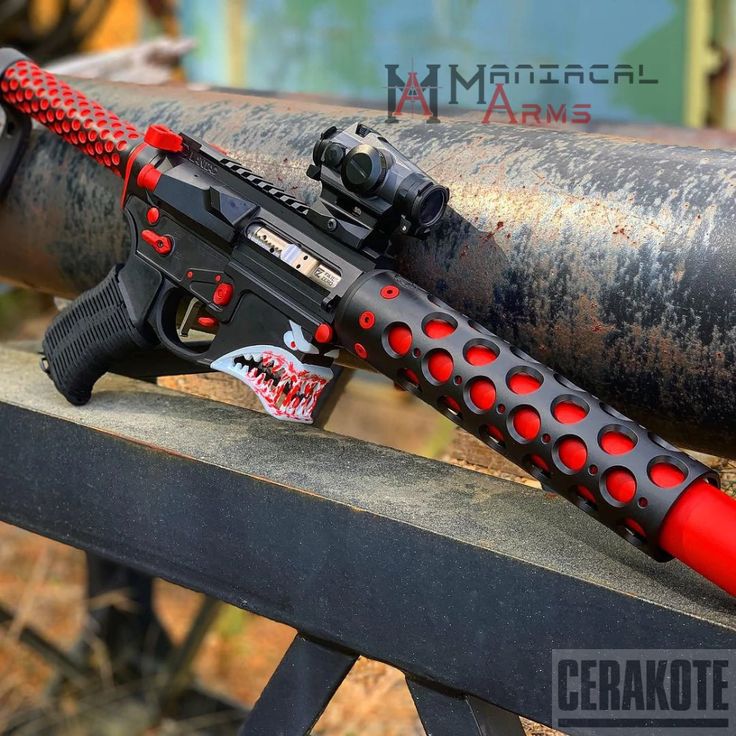How to Lace and Tie Combat Boots for Style and Support: Step‑by‑Step Methods that Elevate Any Outfit
Why lacing and tying methods matter for fashion
Great style starts from the ground up. The way you lace and tie combat boots changes the silhouette of your footwear, how snug the ankle looks, and the overall balance of your outfit. Certain methods can create a sleek, minimal vamp for dressier fits, while others add assertive, utilitarian lines that complement cargo pants, leather, or structured outerwear. Some patterns may also improve foot hold and shaft stability, which helps your boot look crisp throughout the day [1] . Fashion-forward brands and boot makers frequently feature ladder and bar lacing for visual impact on taller shafts, making these patterns both aesthetic and functional choices [5] .
Core lacing styles that elevate your look
Ladder lacing: bold, structured, statement-ready
Ladder lacing creates vertical rails and horizontal rungs up the boot shaft, producing a clean, architectural effect that reads instantly tactical. It offers firm support and is popular for tall boots; you will typically need longer laces. This pattern can sharpen wide-leg or cargo silhouettes and pairs well with leather jackets and structured coats. It’s also a strong choice when you want the boot shaft to stand visually on its own in a minimalist outfit [1] [2] [4] [5] .
Step-by-step (fashion-focused execution):
- Start inside-to-out through the bottom eyelets with even lace ends for a tidy base line [2] [5] .
- Run each end straight up to the next eyelet and feed outside-in to form the vertical rails [4] .
- Cross each lace horizontally to the opposite side and thread it under the vertical rail to create the “rung,” then go up to the next eyelet; repeat to the top for a uniform ladder effect [2] [4] .
- Tie a compact, secure knot; some wearers hide the bow inside the shaft for a cleaner, editorial finish [2] [5] .
Styling examples: Use ladder lacing with raw-hem denim and a cropped bomber to emphasize the boot shaft. For a tailored look, pair with slim trousers that break slightly above the top eyelets; the straight rungs keep the vamp visually tidy.
Common challenges and fixes: If the shaft feels overly rigid, skip one rung at the instep to ease flex while keeping the ladder look. If laces run short, re-lace with longer pairs; ladder lacing typically requires more length than crisscross [1] [2] .
Army lacing: flexible and casual with clean verticals
Army lacing routes vertical sections on the outside with crossovers hidden on the inside, creating a restrained, orderly appearance and more ankle flexibility than ladder lacing. This suits off-duty looks-think chore coats, utility pants, and knitwear-while maintaining a neat front profile that doesn’t compete with textured fabrics [1] [3] .
How to do it:

Source: elizabethjayne.co.nz
- Feed laces through bottom eyelets from the inside out for an even base.
- Take one lace straight up on the outside into the eyelet above (outside-in), then cross underneath to the opposite side and come back up inside-out, creating hidden diagonals and visible verticals [3] .
- Repeat to the top for a tidy column look with improved ankle mobility compared to ladder lacing [1] .
Style tips: Works with cuffed chinos, fatigue pants, and relaxed straight denim. Because the outside looks minimal, it pairs cleanly with patterned socks peeking between cuff and boot for subtle flair.
Straight bar lacing: minimal and dress-leaning
Straight bar lacing creates horizontal bars across the eyelets and hides diagonals inside. It’s the most streamlined visually and often favored for dress or polished outfits, though it offers the least support. Use it for fashion-first moments-smart casual suiting, long wool coats, or monochrome fits where the boot should read sleek and refined [1] .
Execution notes: Keep tension even so each bar sits flat. If the shaft is tall, consider leaving the top two eyelets in crisscross to slightly increase hold without breaking the visual line (a hybrid approach).
Classic crisscross (diagonal) lacing: versatile and easy
Crisscross lacing is the familiar X-over-X pattern-quick to adjust and suitable for most day-to-day styling. It accepts thicker laces, plays nicely with rugged denim, and reads authentically utilitarian. For a polished twist, keep the vamp taut and finish with a compact bow; for grunge or streetwear, leave a little slack at the ankle and tuck the ends [3] [4] .
How to do it cleanly:
- Start inside-out at the bottom eyelets with even ends [3] .
- Cross diagonally and feed inside-out at each row to the top, maintaining equal tension.
- Finish with a secure knot; tuck or wrap the ends for the look you want.
How to tie your combat boots for fashion and function
Secure, low-profile knots
For a sleek finish that photographs cleanly and resists loosening, consider a square knot or an internal bow. A square knot helps keep tension balanced; an internal bow (tying inside the shaft) eliminates visual clutter and works especially well with ladder lacing and bar lacing. The square knot is a common recommendation alongside supportive patterns like ladder lacing for reliable hold throughout movement [1] [2] .
Steps for a clean finish:
- Tie a snug bow or square knot at the top eyelets.
- If you prefer no visible bow, feed the loops and ends down the shaft and tuck them under the tongue. Ensure there’s enough slack to avoid pressure points when walking [2] .
Alternatives and details: For streetwear looks, you may wrap remaining lace once around the ankle before tying. For a refined look, keep the knot compact and centered; asymmetrical bows can distract from a clean trouser break.
Choosing the right method for your outfit
Use the method as a styling lever. If your pants are wide or stacked, a structured pattern like ladder lacing provides visual order. If your fit is already sharp-pressed trousers, crisp shirt-straight bar lacing aligns with that minimal energy. For everyday wear with jeans, crisscross or army lacing gives you mobility and an authentic workwear vibe. Boot makers and tactical guides consistently note ladder lacing for superior support and visual presence on high boots, which is useful when your boot is the outfit’s focal point [2] [4] [5] .

Source: ar.inspiredpencil.com
Fit, comfort, and troubleshooting
Prevent heel lift and tongue slip by tightening the lower eyelets and moderating tension over the instep. Ladder lacing can reduce ankle roll and keep the shaft upright; if it feels too rigid, skip a rung at the ankle bend for comfort. Army lacing offers more flexibility around the ankle if you need range of motion for walking or long days on your feet. Straight bar keeps a neat facade but may not hold as firmly-reserve it for lower-activity days. These functional differences are widely noted across training and boot-maker resources [1] [4] [5] .
If laces come undone, retie with a square knot and ensure lace friction is sufficient; waxed or textured laces can help maintain tension without bulky double bows. When hiding knots inside the shaft, check for hotspots and readjust to prevent rubbing during wear [2] .
Step-by-step quick-start guide
Pick one method and follow these concise steps to get runway-ready results today:
- Ladder Lacing: Inside-out at the bottom; run straight up outside-in to form vertical rails; cross to make a rung under each rail; repeat to top; tie and tuck for a clean front. It yields strong support and a dramatic, editorial profile on tall boots [2] [4] [5] .
- Army Lacing: Inside-out start; create visible verticals outside with crosses hidden inside; tie a compact bow; great balance of neat looks and flexibility for casual styling [1] [3] .
- Straight Bar: Build clean horizontal bars with hidden diagonals for dress-leaning outfits; consider hybridizing the top two eyelets for a touch more hold [1] .
- Crisscross: The universal X-over-X pattern; fast to adjust and adaptable from workwear to streetwear; finish with a tidy, symmetric knot [3] .
Outfit pairings and style scenarios
Street utility: Ladder lacing with cargo trousers and a cropped puffer centers the boots as the statement piece-keep the bow hidden to emphasize the shaft lines [5] . Smart casual: Straight bar lacing under pressed chinos and a topcoat reads modern and pared-back; choose thin, tonal laces to blend with the leather [1] . All-day wear: Army or crisscross with denim and a field jacket balances comfort with a tidy vamp; adjust ankle tension midday for consistent shape [3] .
Pro tips to fine-tune the look
- Match lace width to eyelet size: Narrow laces keep bar lacing crisp; wider laces add presence to ladder patterns [5] .
- Mind shaft height: Taller shafts showcase ladder lacing best and can benefit from longer laces for even spacing and tension [4] .
- Keep symmetry: Re-center the bow and equalize bar spacing for polished outfits. For rugged looks, a slight asymmetry can feel intentional.
What to do if you can’t use links
If you prefer not to follow external guides, you can still get results by searching for official brand terms like “Dr. Martens how to lace boots” or “LOWA ladder lacing guide.” Look for instructions from recognized boot makers or tactical trainers. You may also visit a local cobbler or footwear boutique and request an in-person re-lacing demonstration; bring your preferred lace length to test tension and comfort on the spot.
Key takeaways
Choose ladder for dramatic structure and high support; army for neat flexibility; straight bar for sleek, dress-leaning fits; and crisscross for everyday versatility. Finish with a compact, secure knot-hide it for minimalism or wrap for edge. By aligning your lacing method with your outfit’s silhouette, you turn combat boots into a precise style tool rather than just footwear.
References
[1] Chris Sajnog (2025). Boot lacing techniques: ladder, army, and straight bar. [2] Overlook Boots (2021). How to lace military boots like a professional. [3] Garmont Tactical (n.d.). How to lace tactical boots. [4] LOWA Military Boots (2019). Five ways to properly lace military & tactical boots. [5] Dr. Martens (n.d.). How to lace boots: ladder and other methods.


